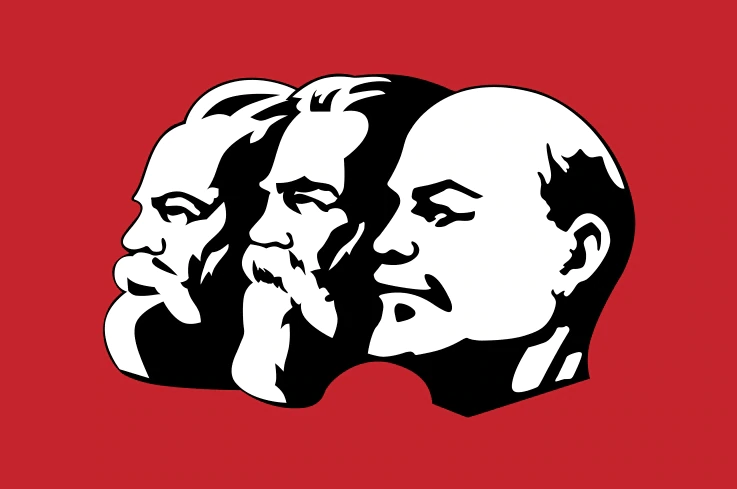More languages
More actions
(head section) |
No edit summary |
||
| Line 1: | Line 1: | ||
[[File:Marxism-leninism symbol.png|alt=|right|frameless]] | [[File:Marxism-leninism symbol.png|alt=|right|frameless]] | ||
'''Marxism-Leninism''' is a | '''Marxism-Leninism''' is a world outlook based on [[dialectical materialism]], the [[Historical materialism|materialist conception of history]], and [[Marxism|Marxist political economy]] including the [[Leninism|Leninist]] conception of [[imperialism]]. It follows the application of Marxist theory by [[Vladimir Lenin]] and the [[Communist Party of the Soviet Union|Bolsheviks]] to the strategy and tactics of [[revolution]]. | ||
After the success of the [[October Revolution|Russian revolution in 1917]] and the establishment of the [[Union of Soviet Socialist Republics|Soviet Union]] in 1922, many [[Communist party|communist parties]] around the world began to adopt Marxism-Leninism as their political line, and Marxism-Leninism was the main theoretical framework which guided the [[Korean revolution|Korean]], [[Vietnamese revolution|Vietnamese]], and the [[Chinese revolution|Chinese]] revolutions as well as other national liberation and revolutionary movements in [[Africa]], [[Asia]] and [[Latin America]]. | |||
Today, Marxism–Leninism is one of the theoretical foundations of currently in govern [[communist parties]] in [[Communist Party of China|China]], [[Communist Party of Cuba|Cuba]], [[Lao People's Revolutionary Party|Laos]] and [[Communist Party of Vietnam|Vietnam]], and it is currently the political line of many [[Marxist-Leninist communist parties|surviving communist parties]] today. | Today, Marxism–Leninism is one of the theoretical foundations of currently in govern [[communist parties]] in [[Communist Party of China|China]], [[Communist Party of Cuba|Cuba]], [[Lao People's Revolutionary Party|Laos]] and [[Communist Party of Vietnam|Vietnam]], and it is currently the political line of many [[Marxist-Leninist communist parties|surviving communist parties]] today. | ||
Revision as of 04:26, 17 April 2022

Marxism-Leninism is a world outlook based on dialectical materialism, the materialist conception of history, and Marxist political economy including the Leninist conception of imperialism. It follows the application of Marxist theory by Vladimir Lenin and the Bolsheviks to the strategy and tactics of revolution.
After the success of the Russian revolution in 1917 and the establishment of the Soviet Union in 1922, many communist parties around the world began to adopt Marxism-Leninism as their political line, and Marxism-Leninism was the main theoretical framework which guided the Korean, Vietnamese, and the Chinese revolutions as well as other national liberation and revolutionary movements in Africa, Asia and Latin America.
Today, Marxism–Leninism is one of the theoretical foundations of currently in govern communist parties in China, Cuba, Laos and Vietnam, and it is currently the political line of many surviving communist parties today.
Origin of the term
In the 1920s, the term Marxism-Leninism was first formulated as well as defined by Joseph Stalin based on his understanding of Orthodox Marxism and Leninism.
Lenin never used the term "Leninism", nor did he include his ideas in the term "Marxism-Leninism". His ideas developed out of classical Marxist thought, which was seen by the Bolsheviks as Lenin's contribution to Marxism.
Characteristics
Dialectical and historical materialism
Critique of imperialism
Imperialism as seen and described by Lenin as well as various other Marxists, has been considered to be the highest stage of capitalist society.[1] Imperialism involves the usage of finance capital as well as the economic exploitation of nations in other forms for the purpose of economic gain and profit for the capitalist class. Imperialism within this sense, is essentially limited to the capitalist system.
